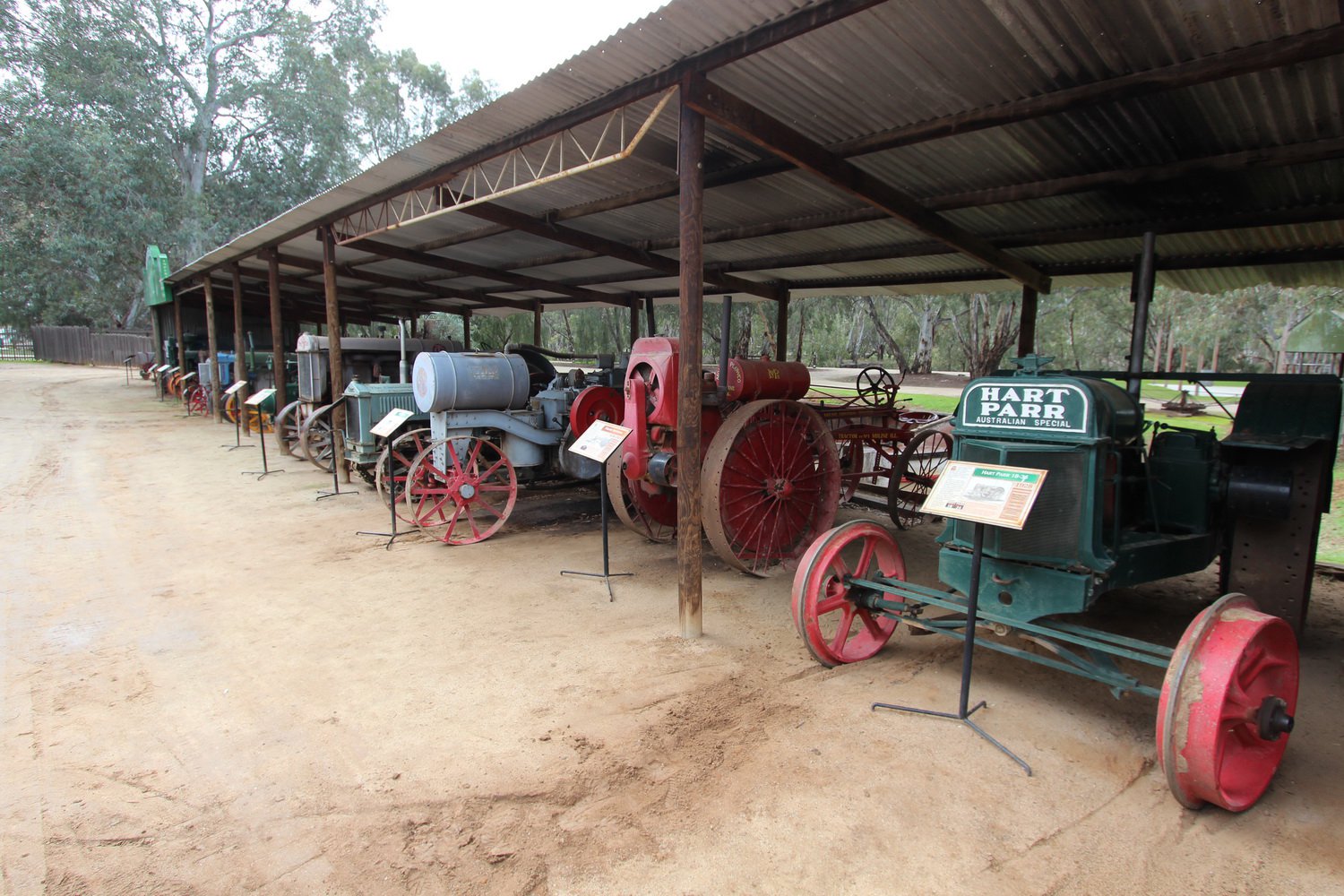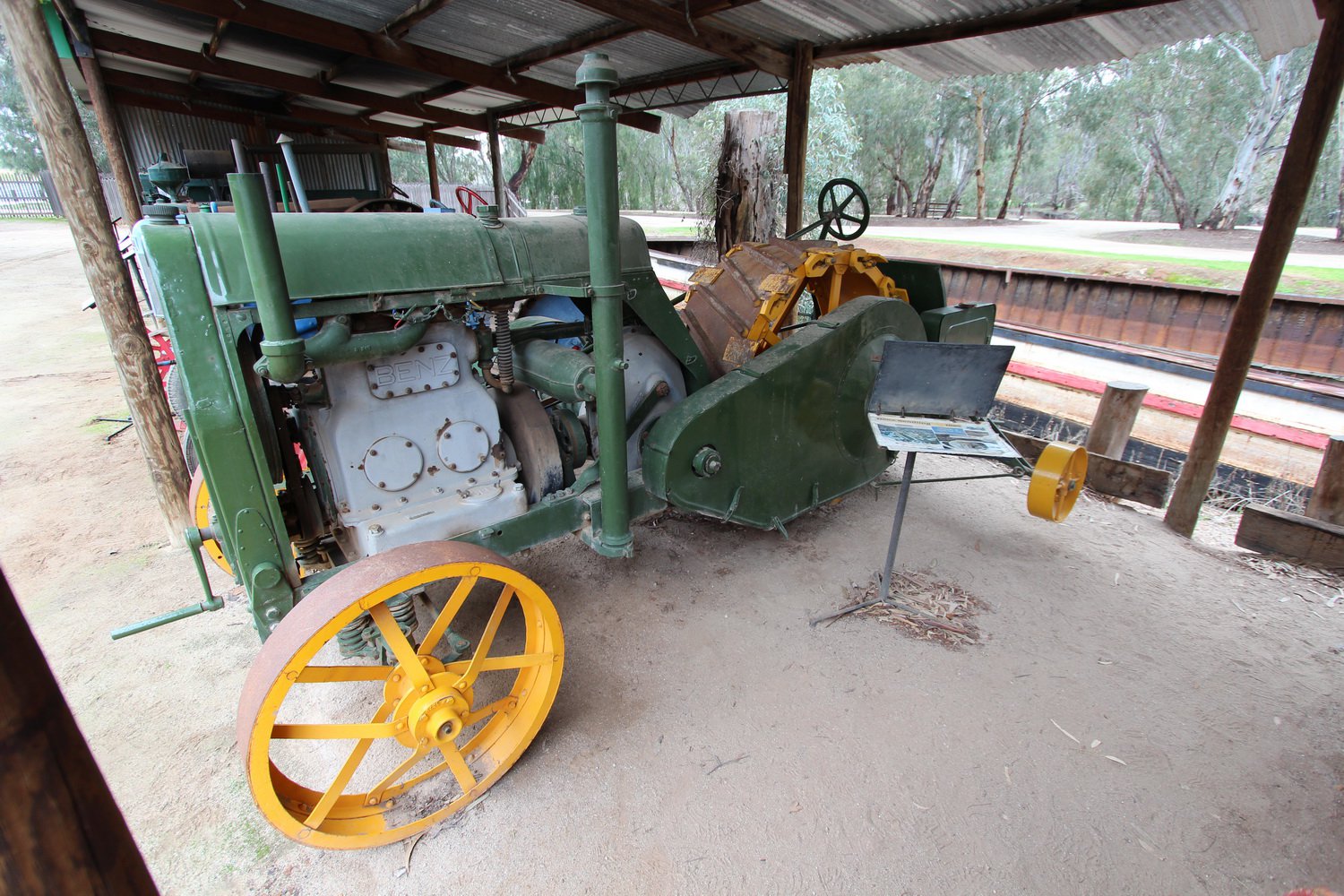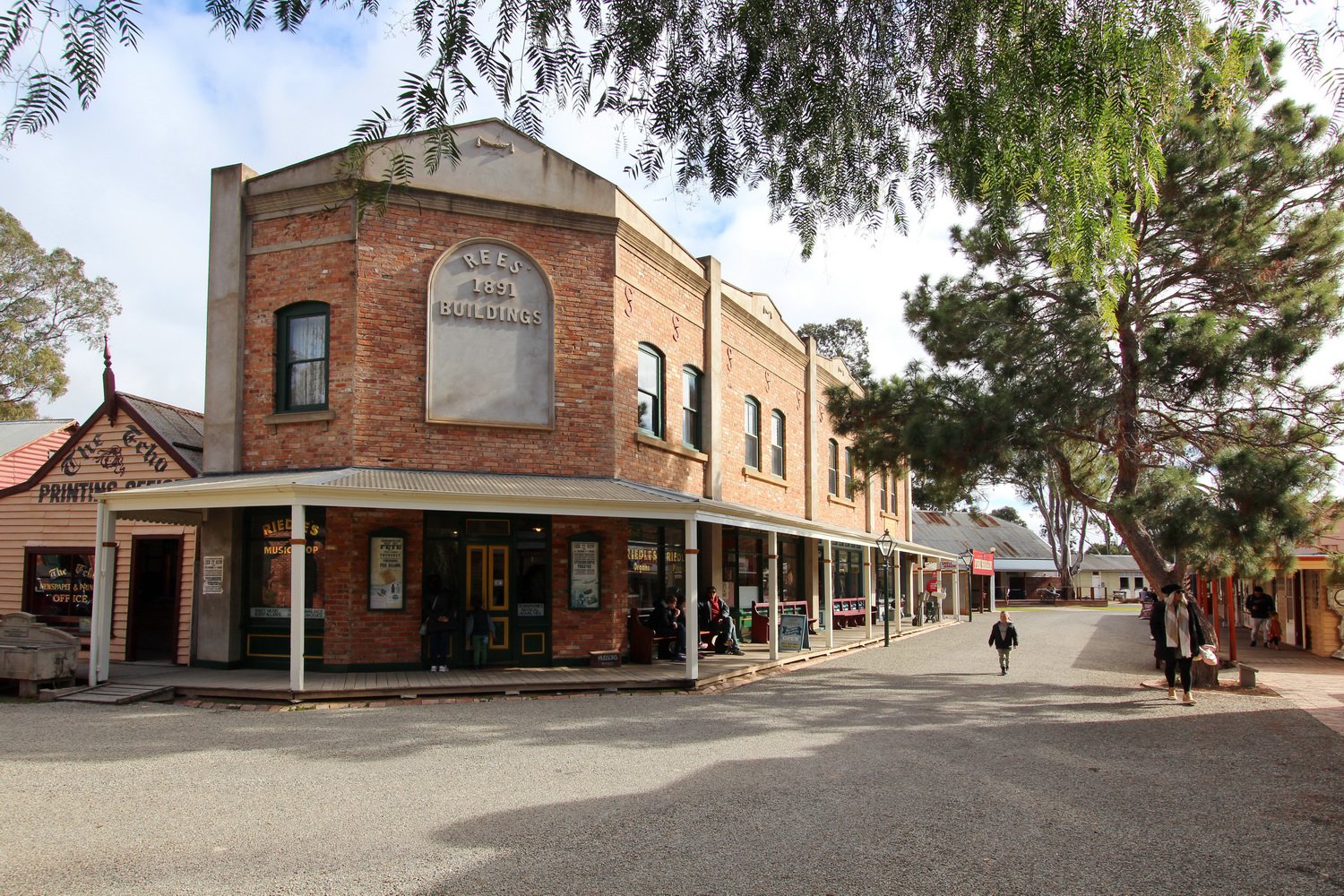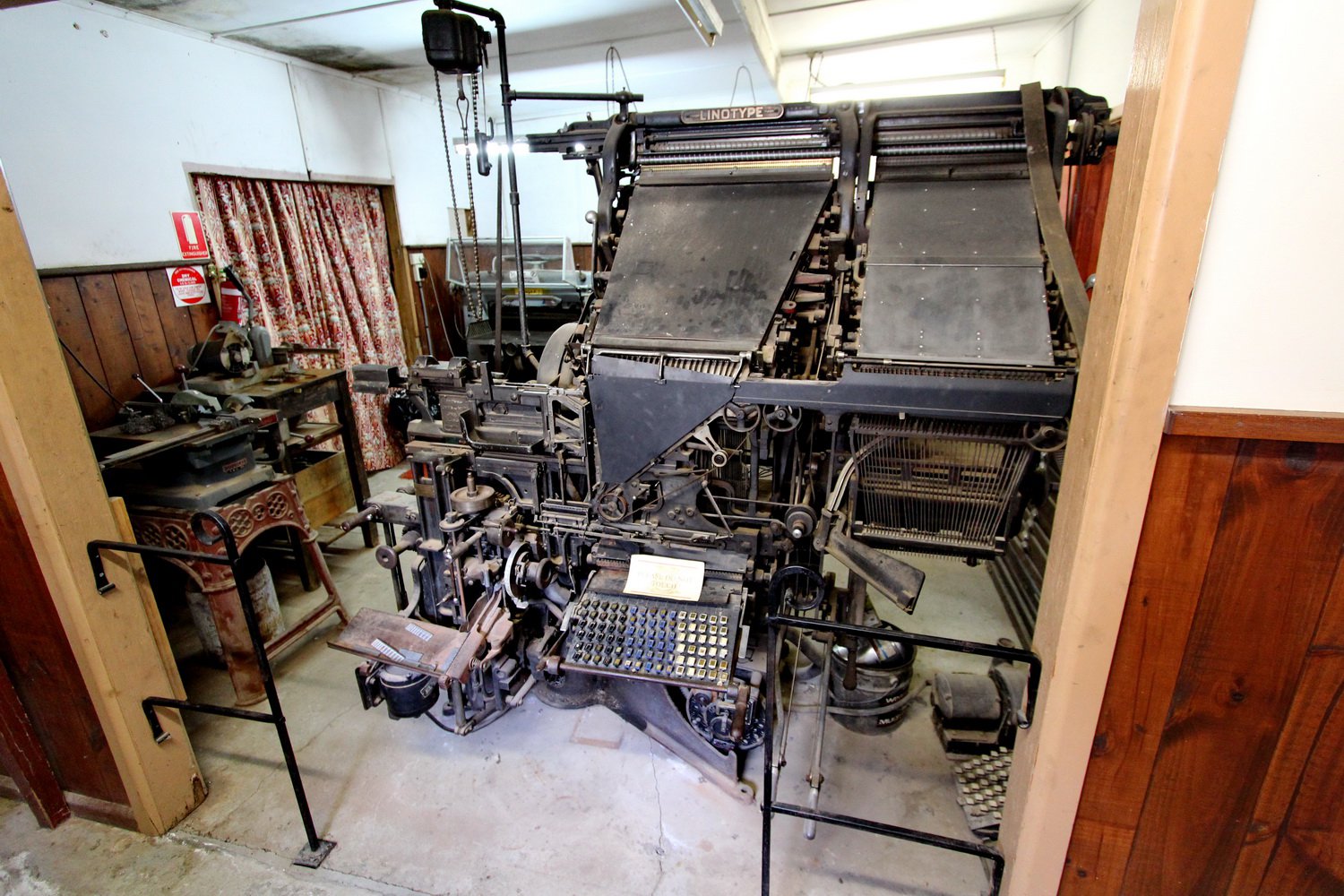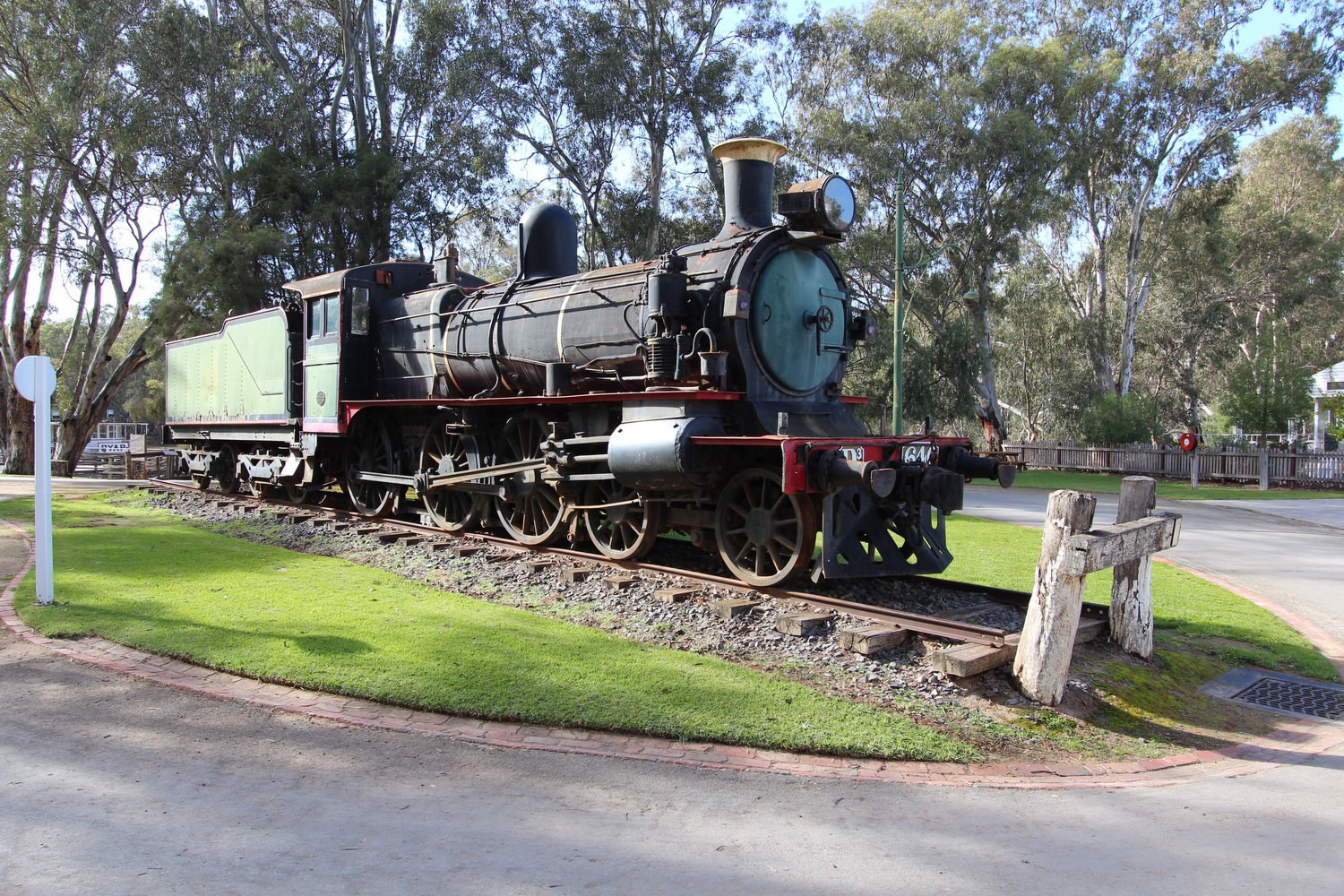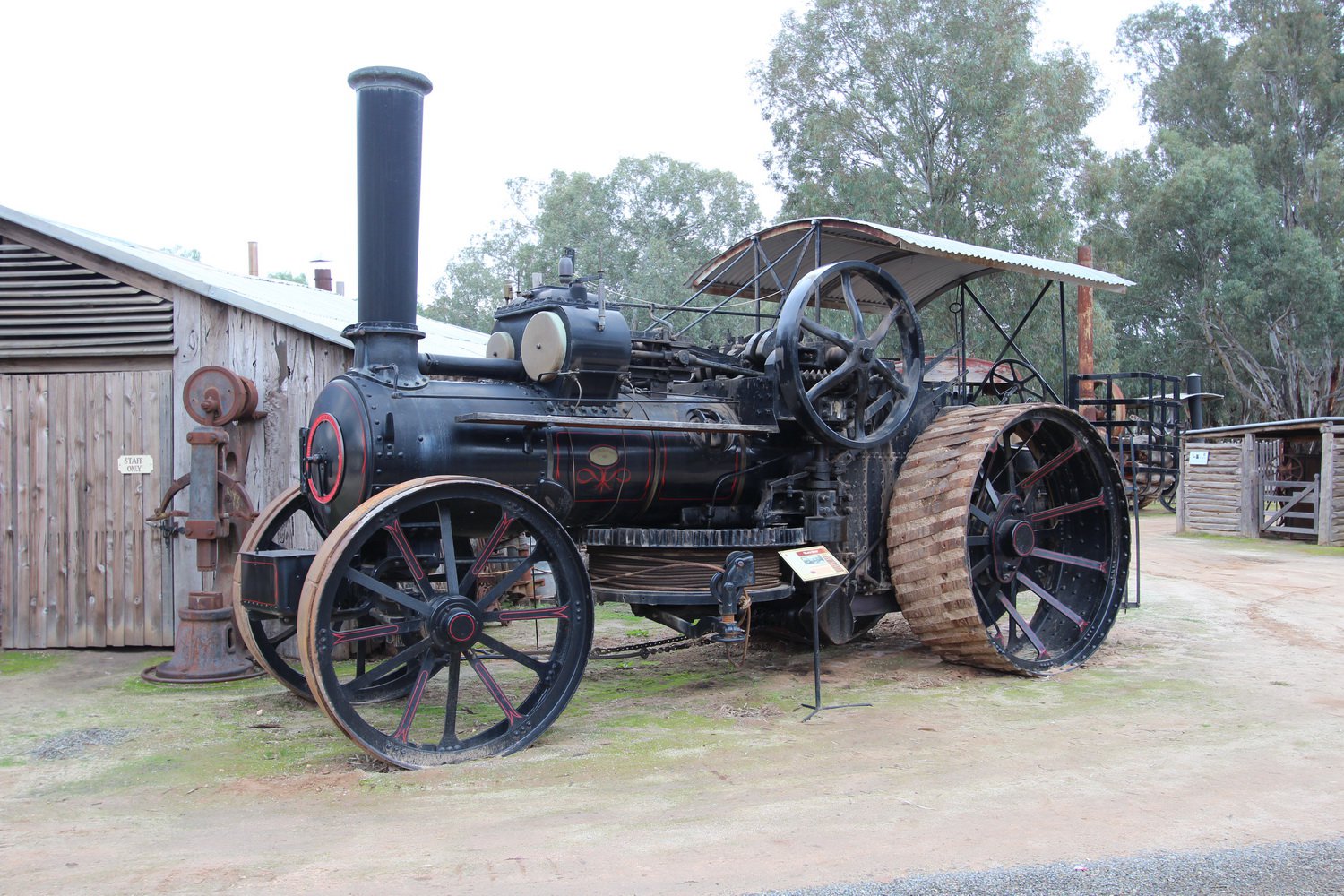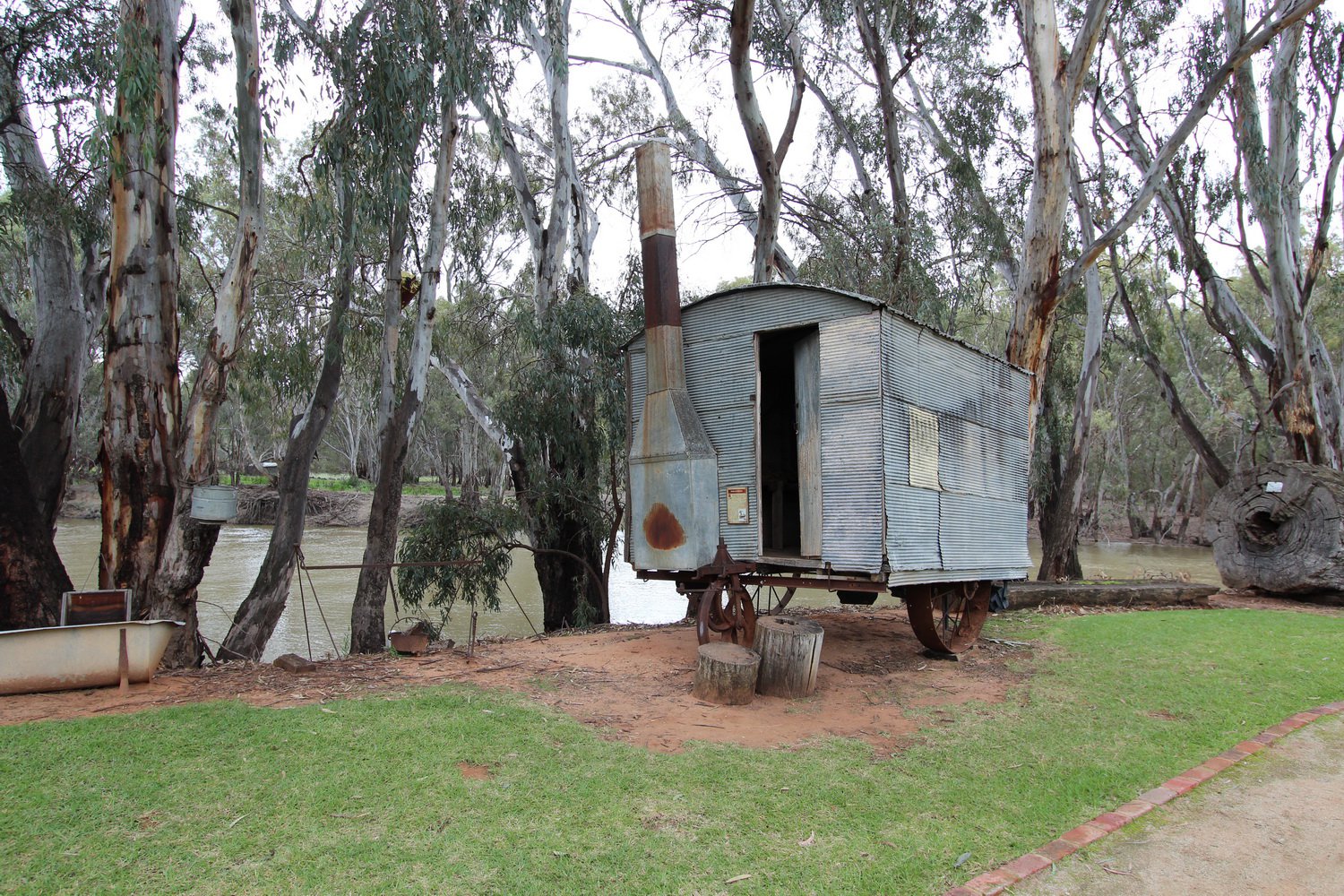When the Covid-19 lockdowns eased we took the opportunity to make a quick trip to the north west of Victoria, crossing into NSW briefly for meals and some tourist attractions.
I did have a booking to stay at Merimbula but due to the Covid-19 pandemic causing many state borders to close, I decided to play it safe and stay mostly within Victoria for the school holiday break.
A part of Victoria we hadn’t been to as a family was the north west of the state was beyond Echuca.
First stop was Echuca. One nice addition since we last visited, at least to Kyle, was a Echuca Distillery, a brand new business making gin and eventually producing whiskey. The stills gleam of bright new copper, especially made in Italy.
Lake Boga
I saw the turnoff for Lake Boga on the way to the Swan Hill accommodation and having an interest in wartime aviation it was a must see. Lake Boga was a base for over 100 PBY Catalina aircraft during World War II as it was distant and safe from the war action in Darwin. The Flying Boat Museum is an excellent place to learn about its history.
Pioneer Settlement, Swan Hill
The Pioneer Settlement has been around since 1963, a lot longer than I realised. I first visited around the 1980’s. It’s excellent that it is still going strong with many improvements having being made over the years. To the visitor it feels more like a museum compared to Sovereign Hill where it seems you have time travelled back to the gold rush era.
The buildings are very good reproductions and the contents are genuine antique items. The D Class steam locomotive sits on a plinth with nothing railway related near it, in contrast Korumburra’s Coal Creek has it’s K Class locomotive arriving at the station complete with a train.
Riedel’s Music Shop
Riedel’s Music Shop contains some intriguing musical instruments including a Pianola and barrel organ dating back to 1896 which is very loud and was used to promote events as it travelled on the back of a suitable vehicle through the main street of towns.
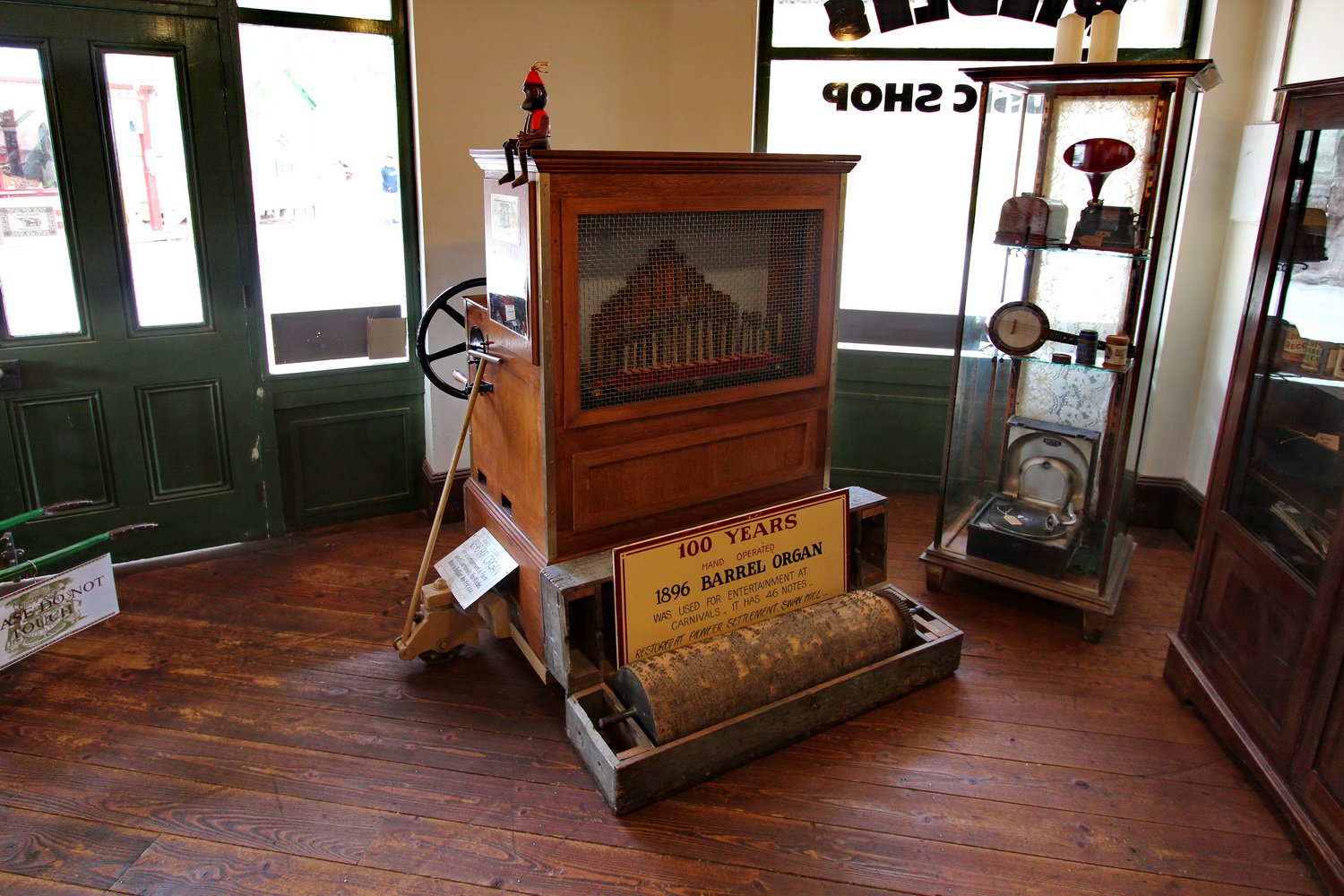
The Gem Paddle Ship
At over 40 metres (130 feet) long The Gem paddle ship is the largest paddle boat on the Murray River when built in 1876 and later lengthened in 1882. There’s no engine to inspect, but the rest of the vessel is mostly intact. The floor plan includes cabins and a small function room, which still seems to be ready to use.
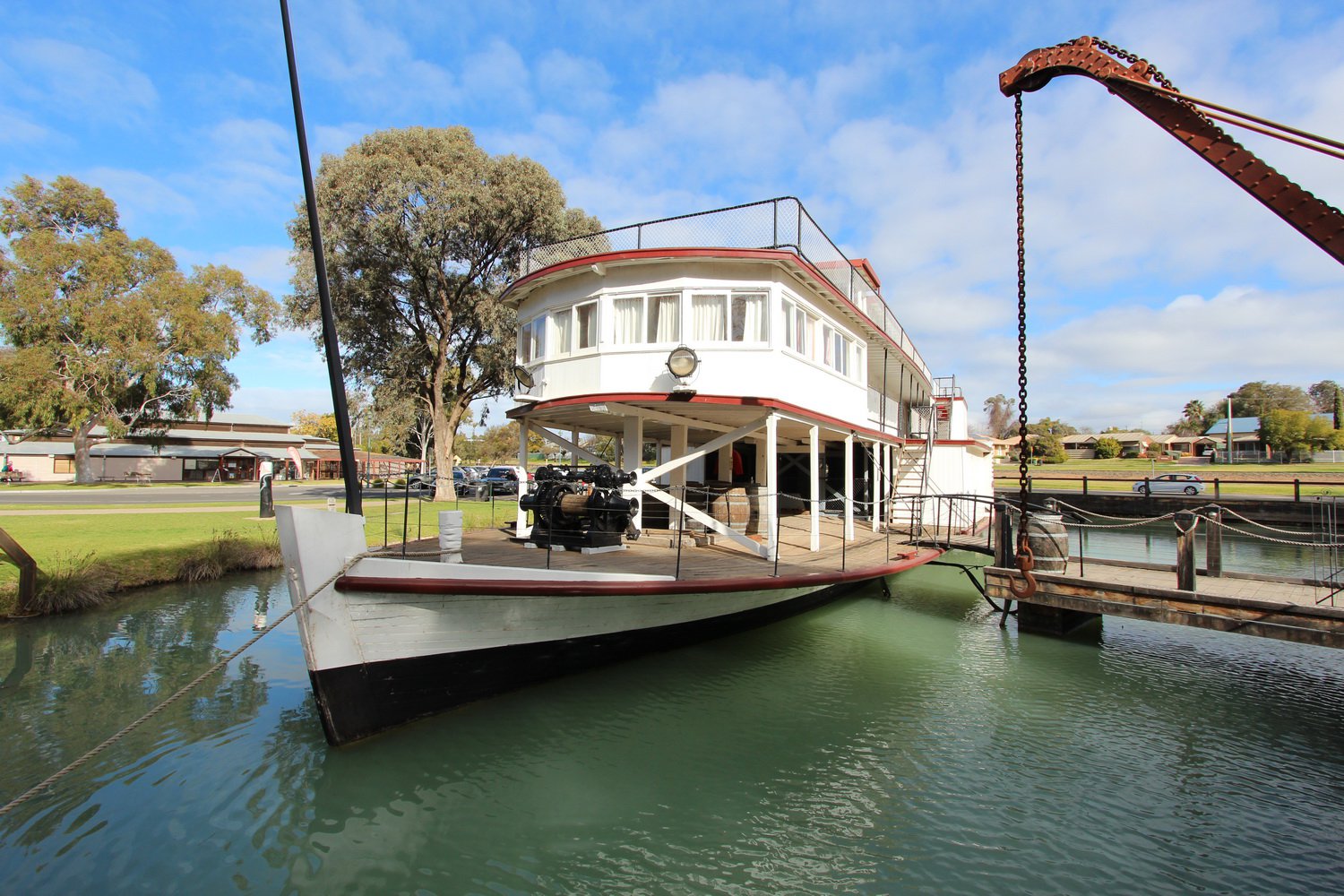
Tractor Collection
The Pioneer Settlement has a large collection of tractors. Periodically throughout the day one is chosen to be started and run around the circuit.
One unusual machine was the Benz Sendling Tractor S8 (1925). It has the normal two wheels at the front but the rear consists of a single wide rear wheel. The operator is positioned to the right and it possibly gave a better view of the work being done during agricultural operations.
The design saves building a large strong rear axle differential and this is the main reason it was done. This came to the detriment of the machine’s stability and to prevent it toppling two rear out rigger wheels were fitted.
Later designs use the more conventional four wheels with a rear axle differential.
Other Attractions
Australian Inland Botanic Garden
Another find from a brochure at the place we were staying, so it’s good to read what’s there when you arrive, or research it before you leave home would be even better!
Australian Inland Botanic Garden is located just north of Mildura and despite the obvious dry conditions the curators have done a fantastic job making the garden looking great with a wide collection of plants.
Mungo National Park
We read about Mungo National Park from a brochure at the accommodation in Mildura. There are images of beautiful sand dunes and rock formations to pique your interest. Getting there from Mildura is a seemingly long 115km drive, with about 50km consisting of the dusty and rough Arumpo Road.

When you get there the closest visitors are allowed to get to the good sights is about 1km away from the actual dunes. You can still see them, and it’s a beautiful sight especially at dusk.
Accommodation is available nearby and it would allow viewing of the Mungo dunes in the wonderful light of dusk and dawn and not have to worry about driving a rough road home at night.
The only way to get closer is to pre book a tour with a certified guide, and this must be done before arriving as there are no phones, internet or staff available to make the booking. Cost is about $50 per person.
It would be worthwhile booking a tour, although the dunes look amazing from the end of the duckboard, they probably get even better the closer you get.
There’s also an old shearing shed complex to inspect. The wood and tin structure has beautiful textures in the old timbers which are wonderful to photograph. The light streams in through the many narrow slits between the external timbers creating an unusual effect. In the back corner is a steam engine used to drive the shears.
Big Lizzie
I vaguely recall Big Lizzie from a book I grabbed from the school library whilst at primary school. So seeing it displayed in Red Cliffs on the way home grabbed my interest.
Early 1915 Frank Bettrill began building Big Lizzie, aided by the A.H. McDonald Foundry located in Richmond. Big Lizzie consists of two 30-foot wagons or trailers and one prime mover powered by a 60 HP single cylinder oil engine weighing 8 tons. The whole vehicle weighs 45 tons and is 34 feet long, 18 feet high and 11 feet wide. Normal speed is 1mph and the turning radius is 200 feet.
She set out from Melbourne in 1916 planning to cart wool from the outback station out of Broken Hill. But the crossing of the Murray River was too hazardous, so the machine & trailers were used for wheat in the area. One such load 899 bags.
In 1920 Big Lizzie was commissioned by the Victorian government to clear trees and scrub in Red Cliffs to form the largest soldier settlement Australia. In 1925 big lizzie moved off this journey to the Balmoral making it her last great trek. For 40 years she lay on a station property, rusting over time. In 1972 Big Lizzie was returned to Red Cliffs and the shelter was completed in 1988. The second trailer is currently being restored.
Hattah Kulkyne National Park
Hattah Kulkyne National Park is located south east from Red Cliffs and Mildura, it’s a widely varied park with forests, sand dunes and a lake. The park roads reminded me of Arumpo Road in the Mungo desert area; but smoother and not quite as much red dust. We took a pleasant drive through the park but there are many walks that can be done if you have time.










